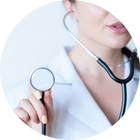First, check if it is too old
So, let’s start by examining your mattress to see if it’s worth compressing. The key signs you need to look for are. We have also covered this topic extensively.
The age of your mattress
If it’s more than 3-5 years old, it probably needs replacement, and may not withstand another compression. If you want to learn more about mattress lifespan , check this>> How many years should a mattress last .
Holes and punctures
If your mattress has tears or punctured holes, they can expand because of compression and ruin the construction of your mattress.
Saggy spots
The sagging mattress is also more prone to collapsing because of compression, so if the surface of your mattress is uneven, it’s better to dispose of it and get yourself a new bed.
Note that if your mattress is covered by a warranty, homemade compression can void it. That’s because manufacturers use special compression machines that apply high and even pressure to avoid causing harm to the materials. If you perform this at home, the results may vary, so pay attention.
If your mattress is indeed fitting some of the above-mentioned problems, and you decide that you want to dispose of your mattress, you can cut memory foam into smaller pieces and use it for upcycling, or completely disassemble your mattress and send it off to the municipal waste collecting program.























